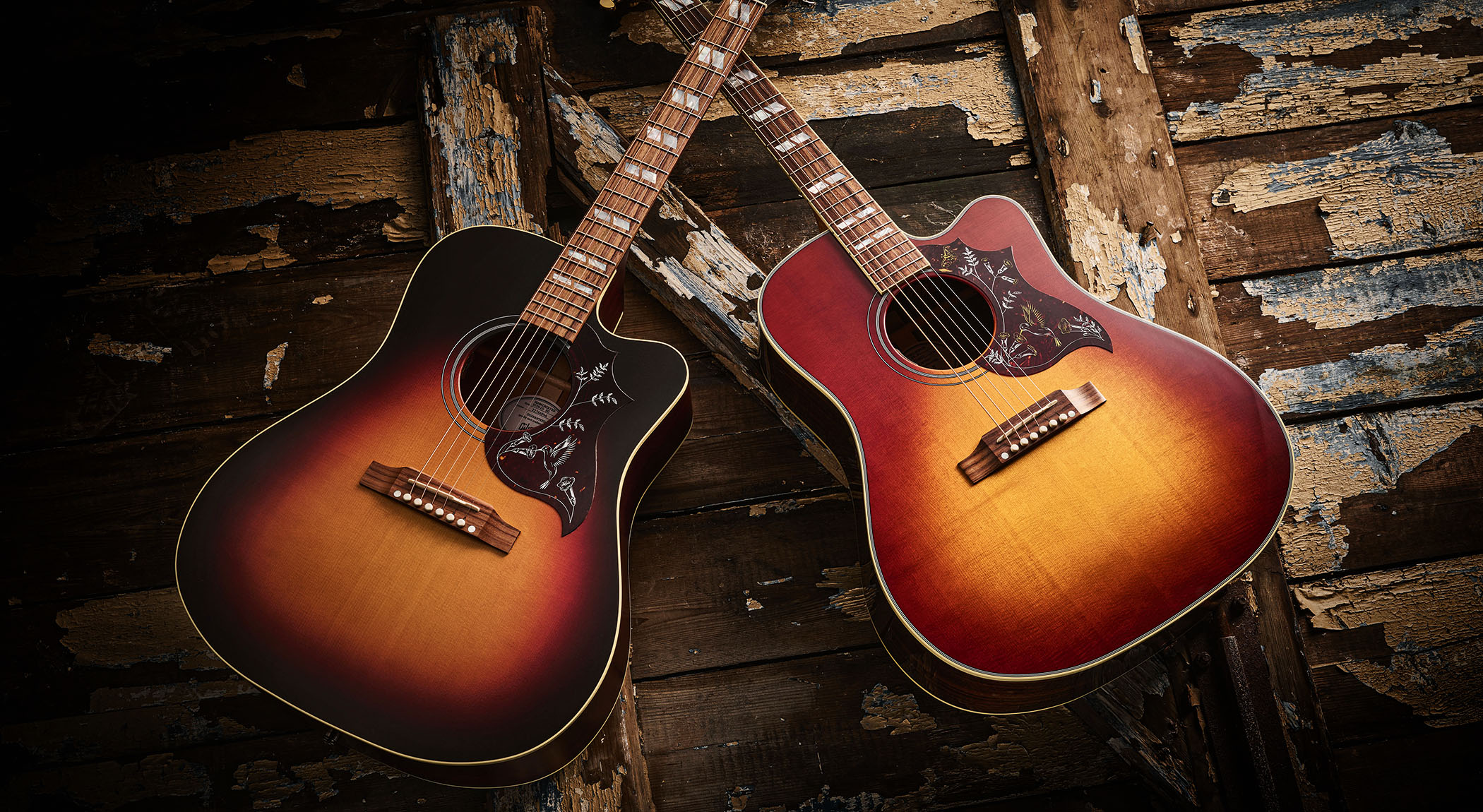
What is it?
Making its debut at the dawn of the 1960s, the Gibson Hummingbird needs no introduction from us. Like its older brother, the J-45, it has established itself as a thoroughly reliable workhorse dreadnought and has seen generations of players succumb to its charms.
It’s famous, too, for its ornate livery, which includes the highly decorated pickguard that depicts a floral motif and, unsurprisingly, a hummingbird. After six decades of tweaks and spec changes, the old ’bird has received Gibson’s latest dust-off in the form of three new cutaway variants aimed at providing accompaniment to another generation of songsters worldwide.
In short, the new range includes a baseline Studio model, the Standard EC and the Standard Rosewood EC. There’s also a variation for the Standard EC in the form of an alternative Ebony finish, which is an exclusive online-only option. All models come equipped with LR Baggs acoustic guitar pickups and so they are ready to rock ’n’ roll straight out of the case.
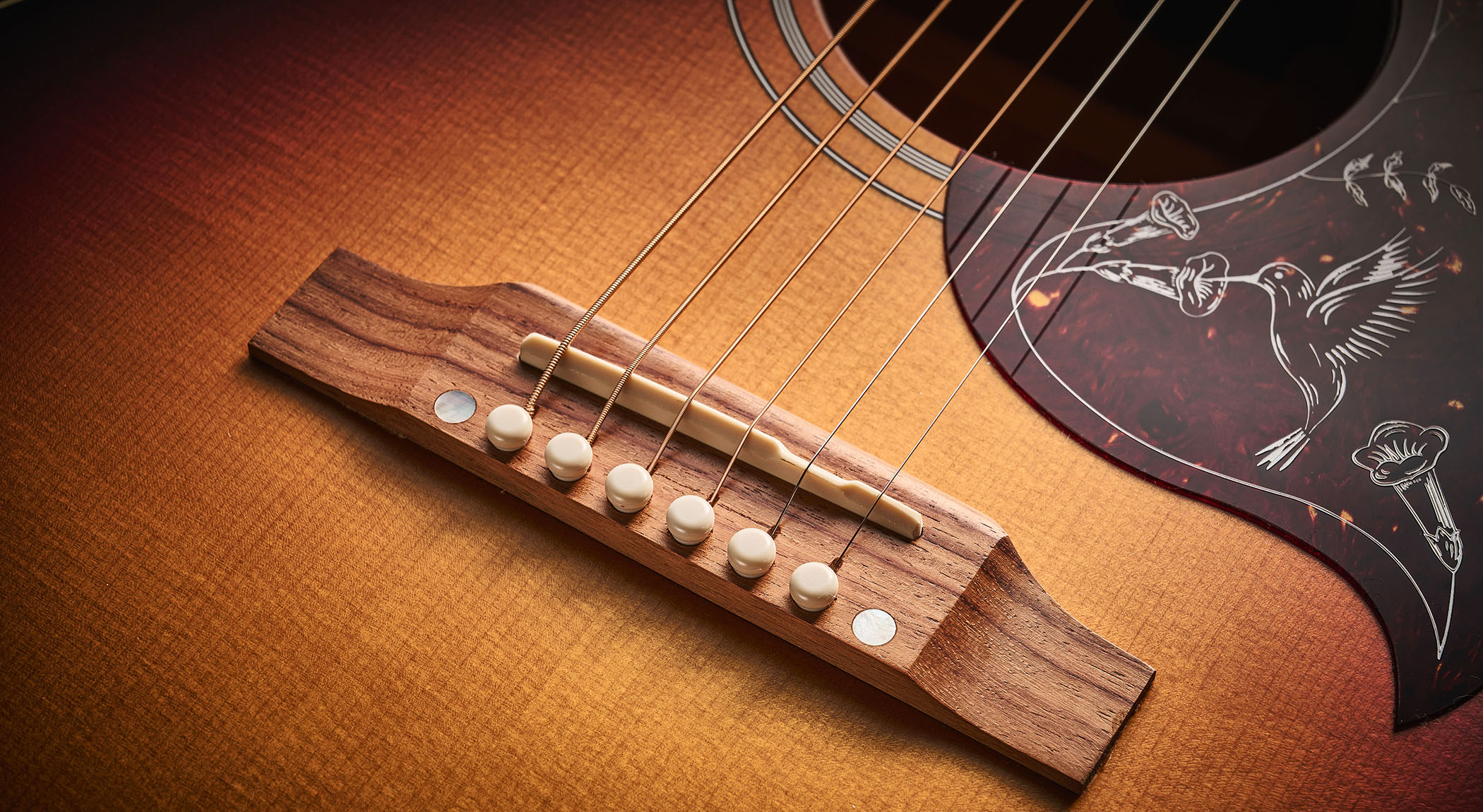
Here, we’re looking at the Studio and Rosewood Standard models that bookend the new range in terms of price point, with the Studio lifting off at around $2.9k/£2.5k and the Rosewood EC hitting the heights at $4.5/£4k. To complete the picture, the Standard EC nests at £3.4k.
All the models are essentially hand-crafted at Gibson’s dedicated acoustic guitars facility in Bozeman, Montana, with a mission to provide “cutaway bodies for improved access to the upper frets and LR Baggs electronics for high-quality onstage sound you can rely on night after night…” So what exactly are the differences in spec between the two models we’re looking at that can justify the $/£1.5k price differential?
Opening the cases, you’d be hard pressed to detect much in the way of a contrast because both look pretty identical, apart from the Tri-Burst finish on the Studio and the muted cherry of its sibling, the Rosewood Burst. It’s only when you zoom in that these ’Birds begin to reveal their innermost secrets.

Considering the spec of the Studio model to begin with, the biggest difference here is the satin finish, as opposed to the high gloss that features on the Standard Rosewood.
With a powerful range of dynamics, we were knocked out by how strongly they performed
As you’d expect from Gibson, it’s been nicely applied and doesn’t detract from the Hummingbird’s traditional good looks. In fact, you’d have to look twice to see much difference in finish with the guitars side by side. We certainly had to under those same circumstances.
Apart from that the Studio follows the expected flight plan with a Sitka spruce top and mahogany back and sides. Moving in for a close-up view of the former, the spruce here looks perfectly serviceable and the Tri-Burst – fading from dark brown to red to mellow yellow – really does look the business. And that pickguard completes the picture nicely.
Turning the guitar over, the mahogany on the back and sides gives a good account of itself, too – nicely dark with attractive, if subtle, dark streaks running through the grain pattern. The body is set off with single-ply white binding front and back, and the furnishings here are complete with a rosewood bridge with a compensated Tusq saddle and an attractive multi-ring rosette.
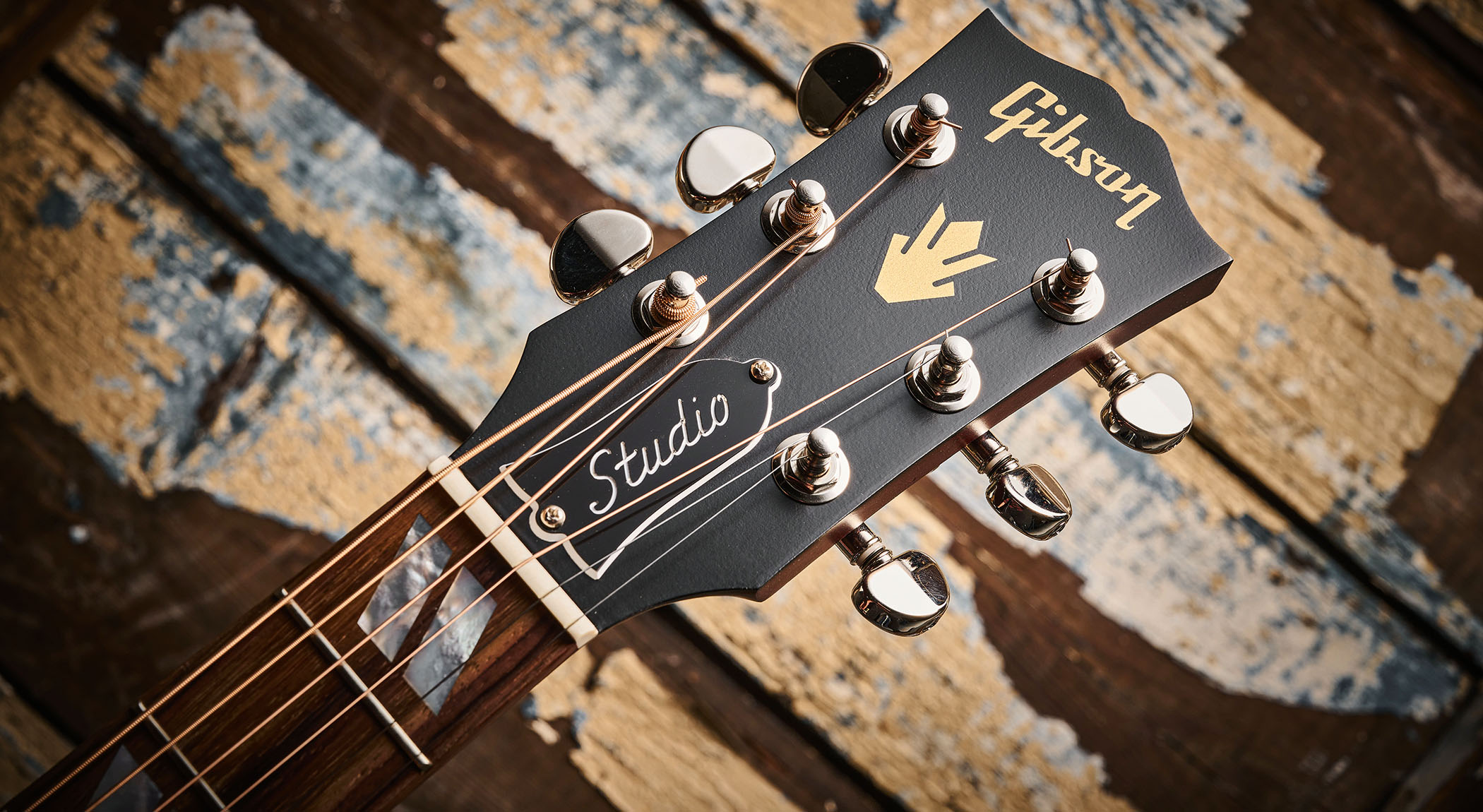
Another major difference – although, again, you’d have to look hard to notice it – is the neck, which is made from utile, as opposed to mahogany. It has to be said that the grain pattern here is a dead ringer for mahogany, and a quick look at utile’s fact sheet reveals it is indeed a very close relative of that more esteemed timber (and is sometimes referred to as ‘sipo mahogany’). And, if you’re curious, the name ‘utile’ comes straight from the Latin meaning ‘useful’.
The Studio’s fingerboard is rosewood and its pale appearance might indicate that it represents a more economical cut, but the fingerboard on the Rosewood Standard is practically identical and so we can assume this is merely what Gibson currently has available across the board, so to speak. On the Studio, the ’board is unbound, however.
The headstock here has another tale to tell in that the Gibson logo and ornamentation is silkscreened and not the inlaid mother-of-pearl on the Standard. Both guitars benefit from Grover Rotomatic tuners, the Studio’s being chrome, while the Standard’s is finished in the more ornate gold.
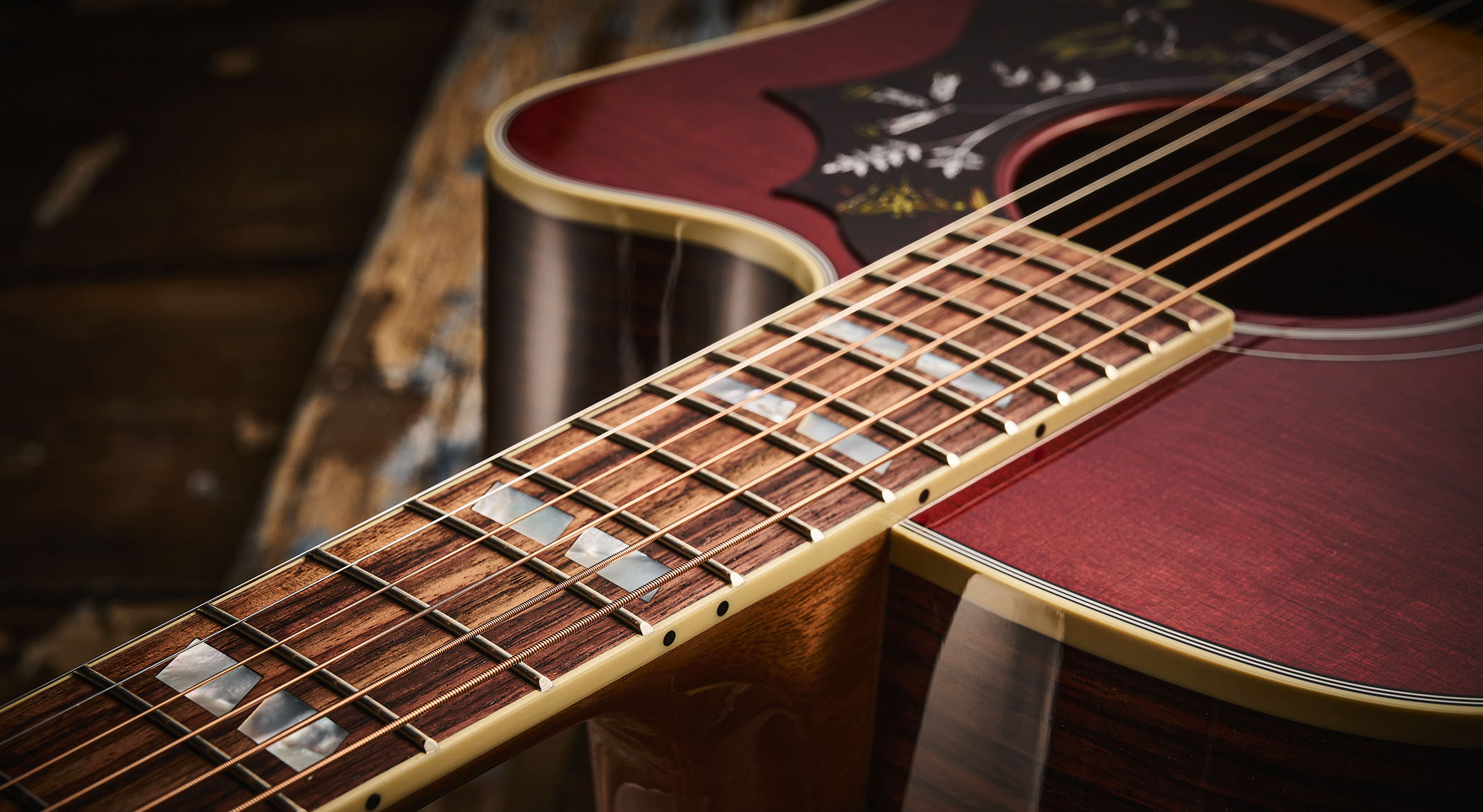
As far as the electronics are concerned, we find an LR Baggs Element Bronze pre-installed, with a simple volume control located just inside the soundhole.
Switching over to the Rosewood Standard, and with that $/£1.5k price difference in mind, we find that the Sitka spruce here seems to be of a slightly higher grade, with plenty of cross patterning in the grain. As with its sibling, the sunburst finish has been applied nicely and this time the body has been multi-bound.
Another main difference between the two models on review is obviously the Standard’s rosewood back and sides. Gibson tells us that the renowned tonewood’s presence here will offer “a bit more bass and harmonic complexity to the legendary Hummingbird tonal recipe”.
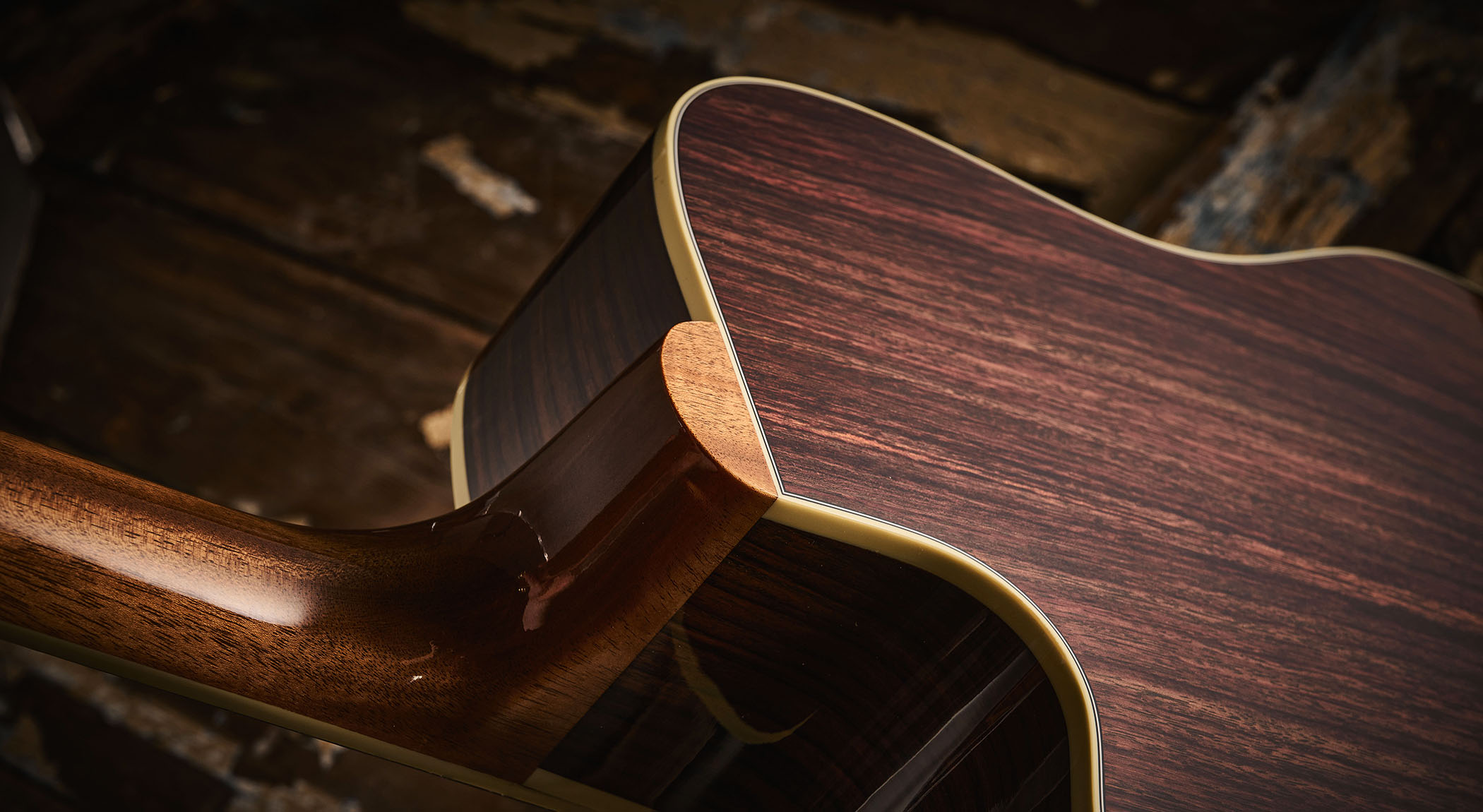
Gibson hasn’t specified the exact nativity of the rosewood present here, but from the look of it, it has all the characteristics of timber hailing from India, with a sumptuous dark to milk chocolate stripy appearance.
As previously mentioned, the Standard has a bound ’board and upgraded tuners, but the mother-of-pearl parallelogram inlays are a feature shared by both. Lastly in our spec showdown, the LR Baggs pickup present on the Standard is the VTC, with both volume and tone controls hidden away in the soundhole.
Playability and sounds
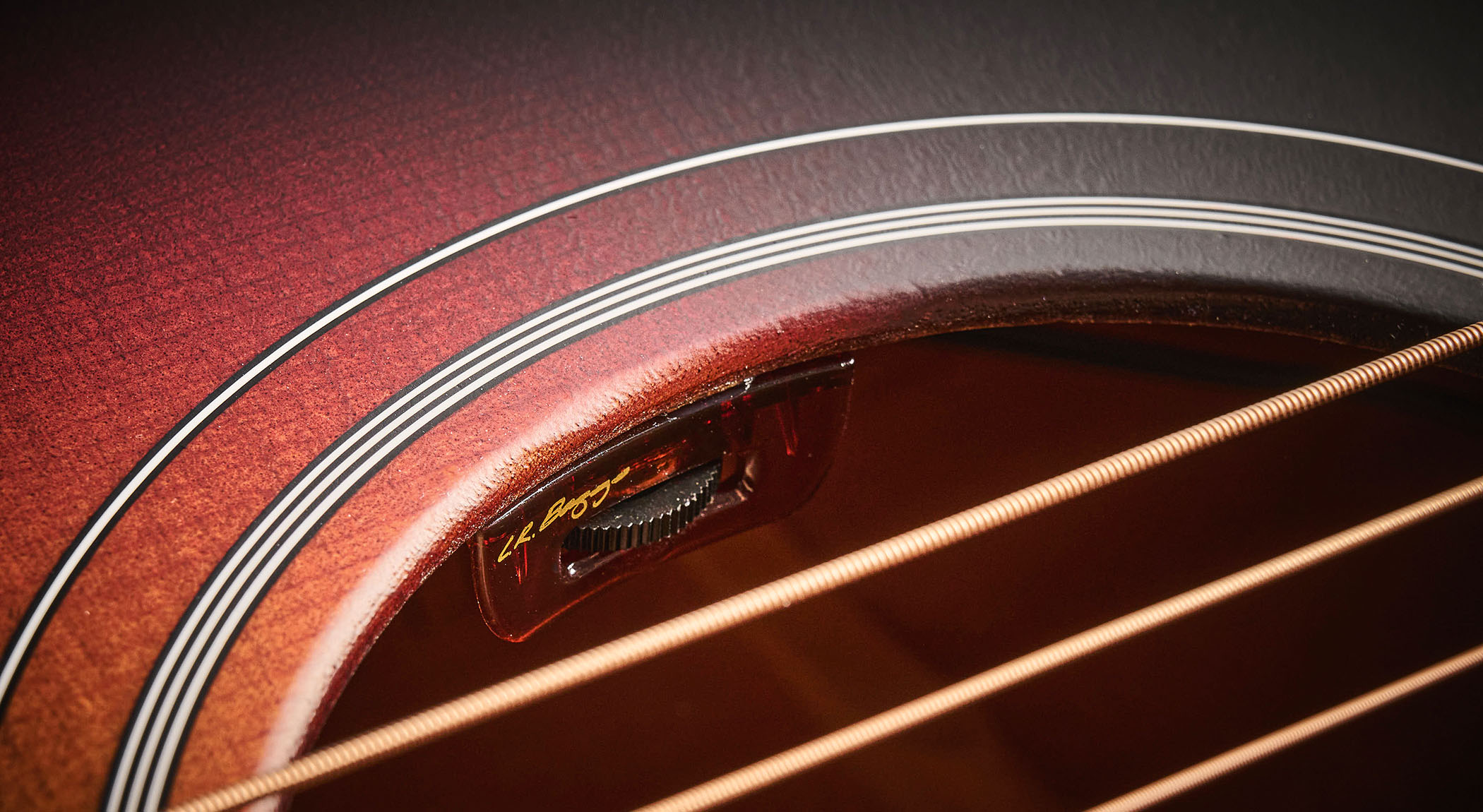
With two guitars that are the exact same build except for some peripheral refinements, it’s no surprise that both models feel very similar in the hand. Necks share Gibson’s Round SlimTaper and fingerboards, with a 406mm (16-inch) radius, and are very comfortable for both chords and single lines. The pair are quite light, too, and a comfortable fit either sitting or standing.
But the front-page news here has got to be how loud these guitars are. It’s very rare to find an acoustic that actually sounds like it’s already been put through some form of amplification, but these acoustics give you everything they’ve got from the start. And that’s not to say it’s all volume and nothing else because both these ’Birds sing sweetly as well.

With a powerful range of dynamics on hand, we were simply knocked out by how strongly they performed. It has to be said that the Studio might even have the edge in the volume stakes, perhaps due to the less dense satin finish. We’d agree that the Standard’s rosewood brings something to the table in terms of complexity and tonal polish, but the Studio’s mahogany is a perfectly worthy alternative.
Firing up the LR Baggs pickups in both gave pleasing results once more as all the tonal fullness and power transferred into the electronic realm with ease. Again, the Studio seemed to just perform a hair above the Standard, but that latter’s extra tone control offered an additional level of flexibility to refine the tone just that little bit more.
Verdict
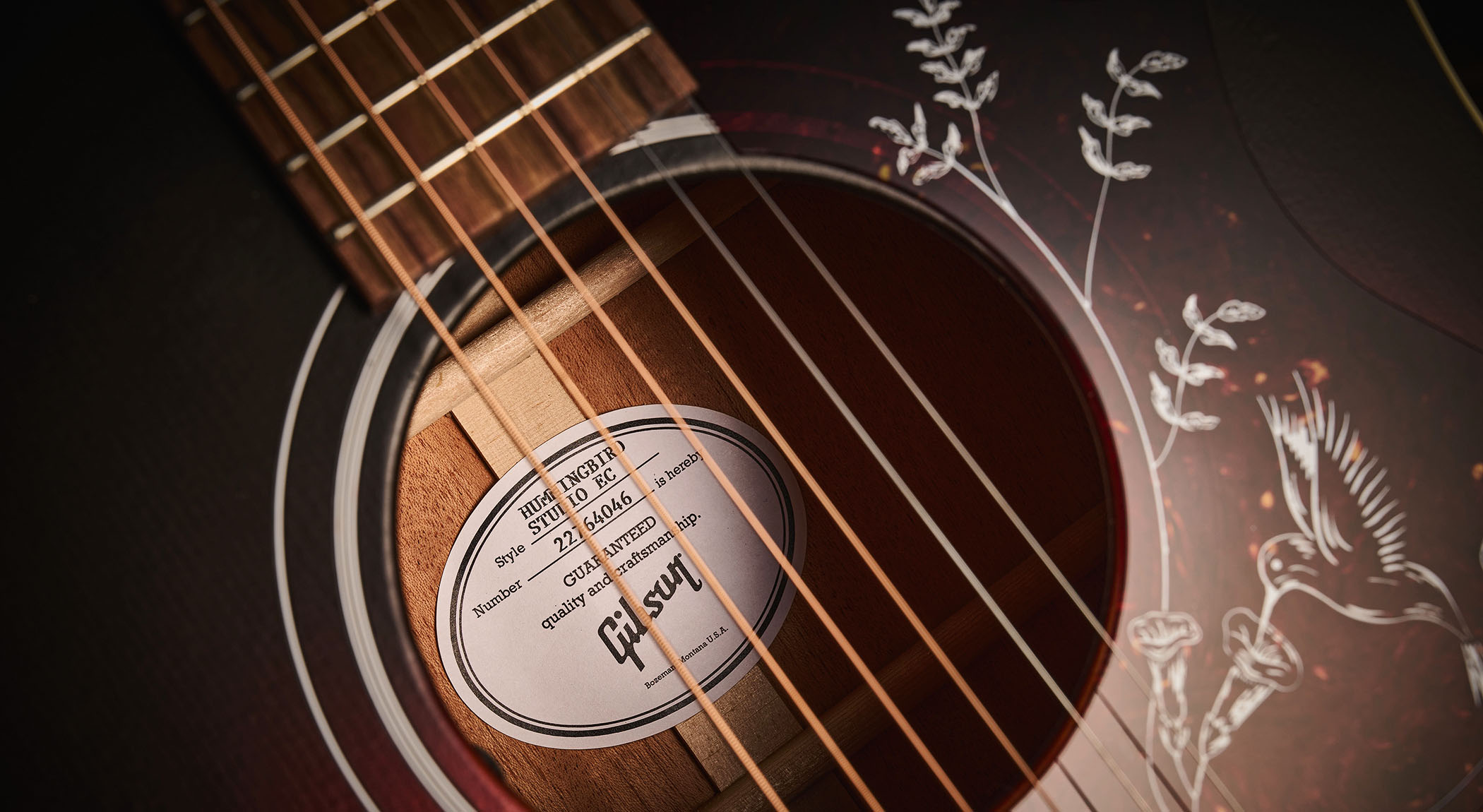
We’ve obviously had the opportunity to play a great number of acoustic guitars in the past, and very occasionally we’ve found one that stands apart in that its build and tonal characteristics come together to produce a really fine instrument.
But here, we’ve found two, leading us to believe that the Hummingbird in its cutaway format is a real winner all around for Gibson.
What’s even more remarkable is that the lowlier Studio version is every bit a champ, tonally speaking, which means that if you can live with those slight reductions in bling levels and the rosewood back and sides, this is the one to go for.
On the other hand, if you want all the whistles and bells and the extra 10 per cent that the rosewood’s soundstage adds to the general picture, then that’s the one for you. Hats off to Gibson!
Guitar World verdict: The cutaway format is perfectly realised on a pair of handsome ’Birds that represent a real victory for Gibson. Don't be fooled by the price; the Studio is every bit the knock-out. But if you want to pay that little bit extra for the rosewood model, you will be similarly rewarded. Either way you can't go wrong.
Specs
Gibson Acoustic Hummingbird Studio EC
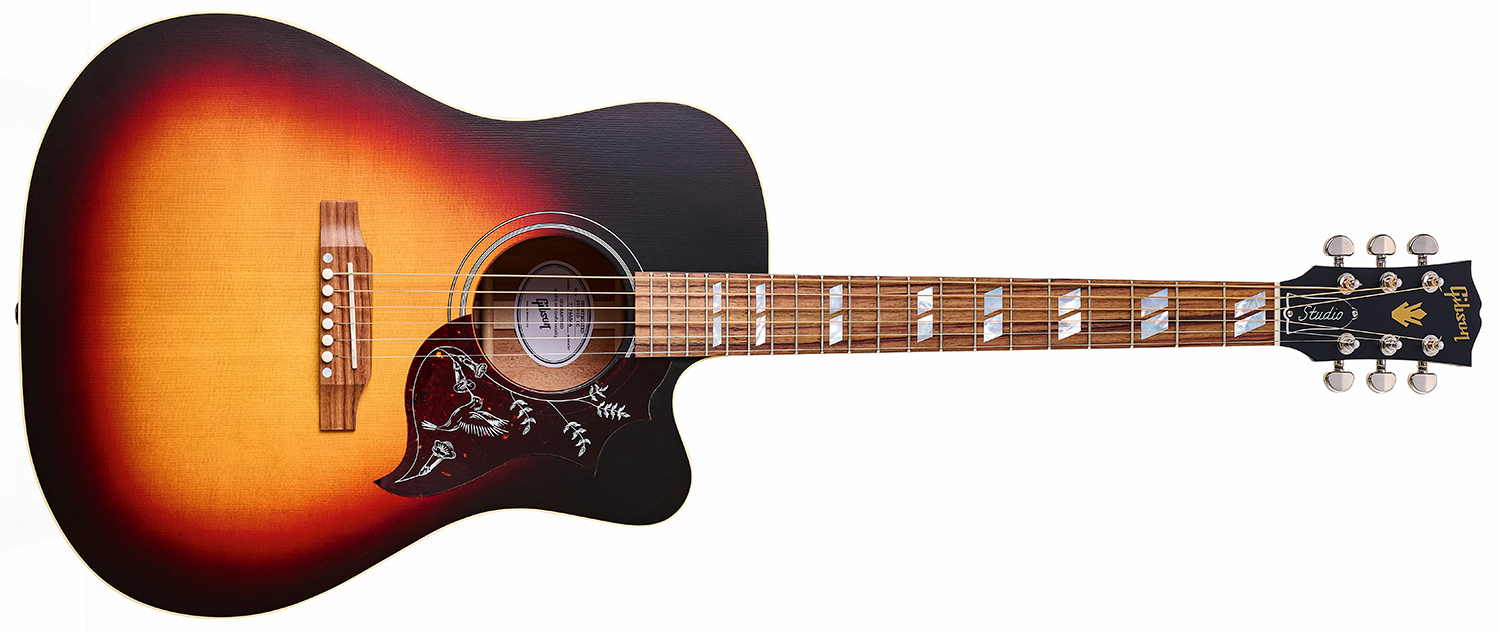
Price: $2,999/£2,599 (inc case)
Origin: USA
Type: Dreadnought cutaway
Top: Sitka spruce
Back/Sides: Mahogany
Max Rim Depth: 124mm
Max Body Width: 406mm
Neck: Utile
Scale Length: 629mm (24.75”)
Tuners: Grover Rotomatic
Nut/Width: Tusq/44mm
Fingerboard: Rosewood
Frets: 20
Bridge/Spacing: Rosewood/55mm
Electrics: LR Baggs Element Bronze
Weight (kg/lb): 2.08/4.6
Options: None
Range Options: There’s a trio of new Hummingbirds – the two you see here and the Hummingbird Standard EC, available in Heritage Cherry Sunburst or, as an online exclusive, in Ebony, both at $3,999/£3,399
Left-Handers: Not yet
Finish: Tri-Burst (as reviewed) – satin nitrocellulose
Gibson Acoustic Hummingbird Standard Rosewood EC
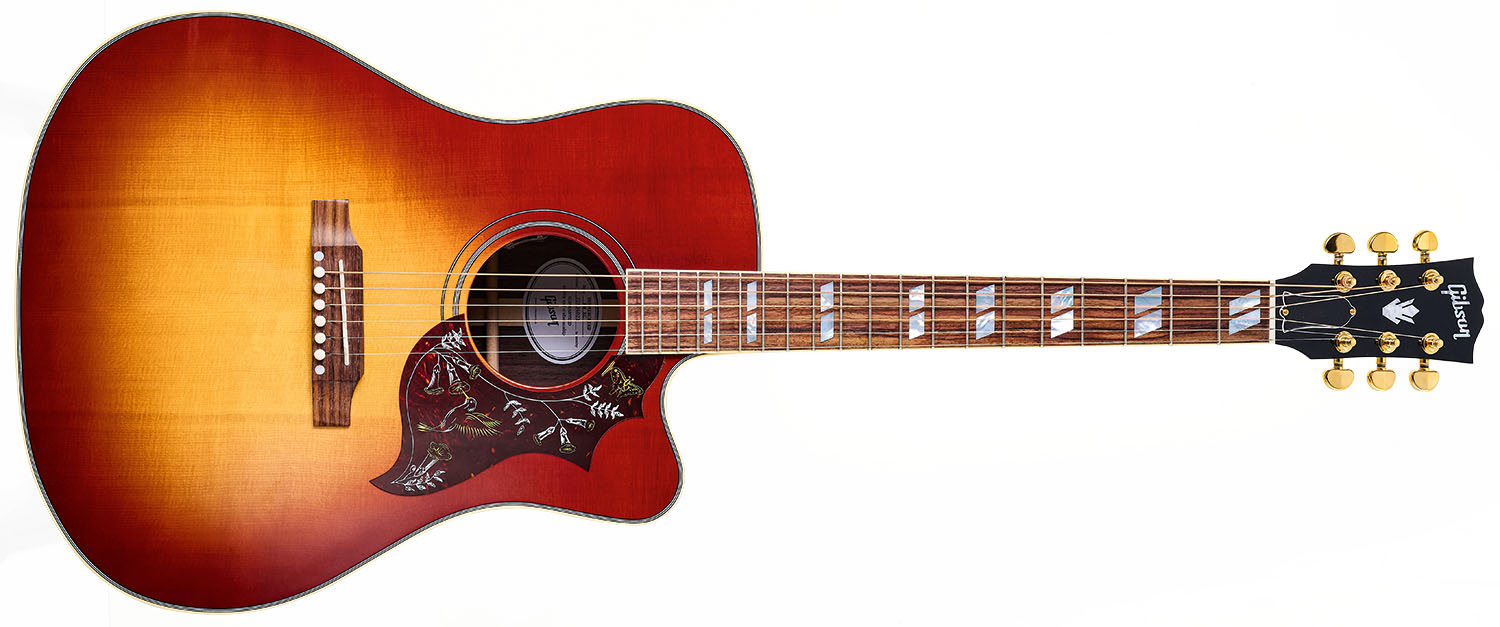
Price: $4,599/£4,099 (inc case)
Origin: USA
Type: Dreadnought cutaway
Top: Sitka spruce
Back/Sides: Rosewood
Max Rim Depth: 124mm
Max Body Width: 407mm
Neck: Mahogany
Scale Length: 629mm (24.75”)
Tuners: Grover Rotomatic
Nut/Width: Tusq/44mm
Fingerboard: Rosewood
Frets: 20
Bridge/Spacing: Rosewood/55mm
Electrics: LR Baggs VTC
Weight (kg/lb): 2.11/4.66
Options: None
Range Options: As per the Gibson Acoustic Hummingbird Studio
Left-Handers: Not yet
Finish: Rosewood Burst (as reviewed) – gloss nitrocellulose
Contact: Gibson







